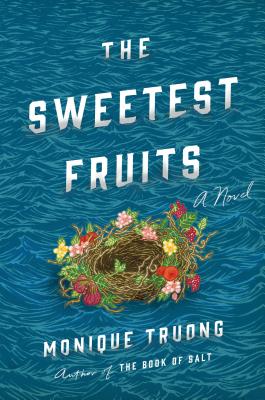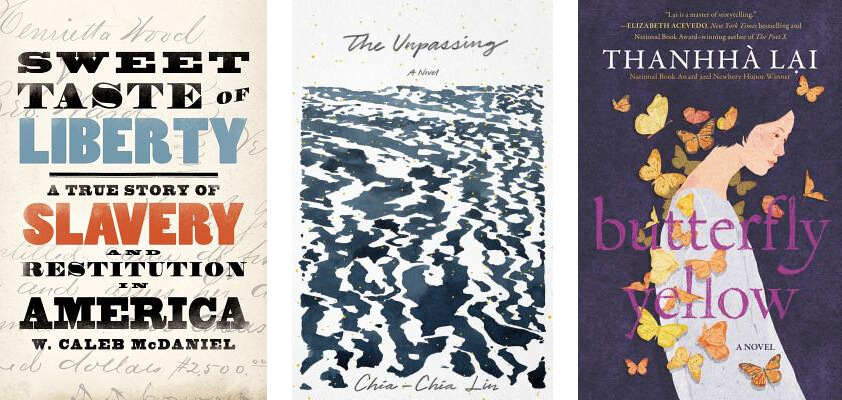Whatcha Reading, Monique Truong?
Every week we ask an interesting figure what they're digging into. Have ideas who we should reach out to? Let it fly: info@seattlereviewofbooks.com. Want to read more? Check out the archives.

Monique Truong is a Brooklyn-based Vietnamese-American novelist, whose many award and accolades, if listed, would turn this pamphlet into a broadside. She is the author of the novels The Book of Salt, Bitter in the Mouth, and the just-released The Sweetest Fruits. Her latest is a fictionalized look at the very real writer Lafcadio Hearn, through the eyes of three women who loved him: his Greek mother, his African-American first wife, and his Japanese wife and literary collaborator.
Truong is also an intellectual property attorney, serves on many boards, has many fellowships, and is a lyricist working on a libretto for an opera inspired by Joseph Cornell and Virginia Woolf. All of which is to say that it would be foolish to miss this opportunity to see her speak next Thursday, October 10th, at the Elliott Bay Book Company, starting at 7:00pm. It promises to be fascinating.

What are you reading now?
I'm reading Sweet Taste Of Liberty: A True Story Of Slavery And Restitution In America (Oxford University Press, 2019) by historian W Caleb McDaniel. The subject is Henrietta Wood, a legal trailblazer whom I should have learned about in law school but did not. She was born into slavery in Kentucky, freed and living in Ohio when she was kidnapped and sold back into slavery in 1853, eight years before the start of the Civil War. That alone is an epic deserving of documentation and study, but Wood’s story is one of survival and of seeking and obtaining redress in a court of law against her kidnapper.
This is how “The Crossing,” the first chapter of Wood’s story, begins: “The blinds had been drawn and buttoned over all of the carriage windows. In hindsight, that should have been the very first sign of trouble. ‘Still, I never suspected,’ Henrietta Wood told Lafcadio Hearn more than two decades later, after she had finally returned to Cincinnati. Otherwise, she might not have left behind in her room the papers that proved that she was free.”
According to McDaniel’s endnotes, the interview ran in the Cincinnati Commercial in April 2, 1876. I’ve spent eight years researching Lafcadio Hearn for my latest novel, but somehow I’d missed this interview. Given the newspaper and the date, I knew exactly the state of mind of the young Greek-Irish reporter Hearn. In August of the previous year, he had been fired from the Cincinnati Enquirer for his “deplorable moral habit,” specifically for cohabitating with a “woman of color.” That woman is Alethea Foley, an African American bi-racial woman who also had been born into slavery in Kentucky and who, post-Civil War, migrated to Cincinnati. Foley and Hearn were living as husband and wife since the summer of 1874. She is one of three first-person narrators of my novel. She’ll tell you that Hearn was in utter disbelief and dismayed by his treatment by the Enquirer and that she, of course, was not. Wood may not have known of Hearn and Foley’s story, but what if she had? What did Hearn and Wood tell each other in that interview that did not make it onto the pages of the Commercial? It’s a tantalizing place to begin this necessary history of enslavement, empowerment, and legal restitution.
What did you read last?
I’ve been reading a lot of first novels this year, and they’ve been remarkably impressive. Chia-Chia Lin’s The Unpassing (Farrar, Straus and Giroux, 2019) is the most recent of these for me. Set on the outskirts of Anchorage, Alaska, this immigrant family narrative, literally and figuratively, took me into new territory. Alaska itself is a character within this Taiwanese American novel and is one that offers both refuge and terror to the children who roam its woods and shores. The beauty and isolation of their geography—their literal backyard—amplifies and echoes the hope and the terrible exile that their parents’ decision to immigrate to the U.S. has placed them in. Will they survive or will they falter is the question that all children in fairytales face when they find themselves lost in the woods. Here, it’s the entire family who is trying to find their way to a home, and it’s their survival, as individuals and as a unit, that is at stake.
What are you reading next?
Top on my to-be-read stack of books is Butterfly Yellow (Harper, 2019) by Thanhha Lai. This is Lai’s young adult novel debut, but it’s her third book. Her first, Inside Out & Back Again (HarperCollins, 2011) — for ages eight to twelve but really for us all — received the National Book Award for Young People’s Literature and a Newberry Honor Book. I consider that novel-in-verse as an example of Vietnamese American literature and Southern literature, as its coming-of-age narrative is set in Alabama. (Full disclosure: I consider myself a Vietnamese-American and a Southern writer, having grown up in North Carolina, which is the setting of my second novel Bitter In The Mouth (Random House, 2010)). I’m eager to begin Lai’s latest, as it’s set in Texas, a region of the country that I also have called home.